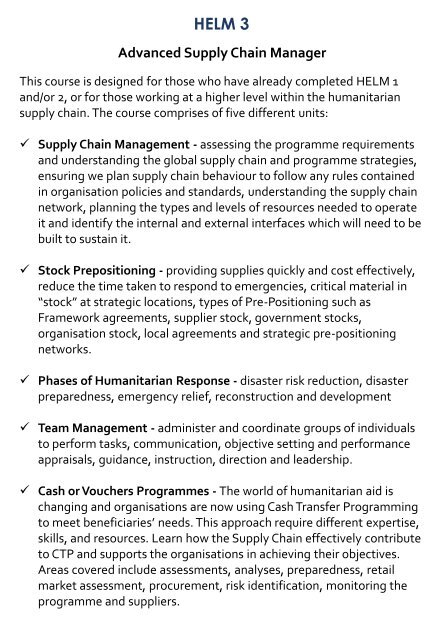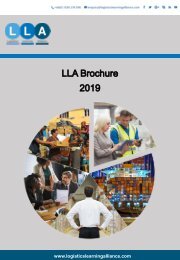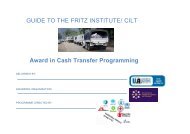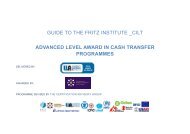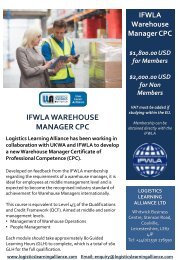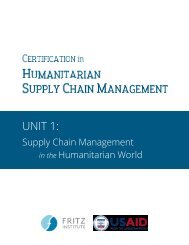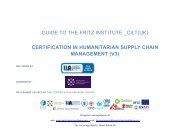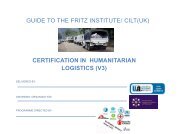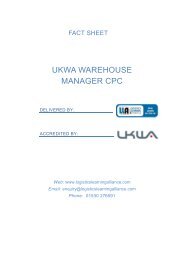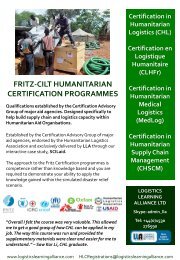Humanitarian Logistics Brochure 2017-18
LLA Humanitarian Logistics and Supply Chain Management brochure 2017-18
LLA Humanitarian Logistics and Supply Chain Management brochure 2017-18
You also want an ePaper? Increase the reach of your titles
YUMPU automatically turns print PDFs into web optimized ePapers that Google loves.
HELM 3<br />
Advanced Supply Chain Manager<br />
This course is designed for those who have already completed HELM 1<br />
and/or 2, or for those working at a higher level within the humanitarian<br />
supply chain. The course comprises of five different units:<br />
✓ Supply Chain Management - assessing the programme requirements<br />
and understanding the global supply chain and programme strategies,<br />
ensuring we plan supply chain behaviour to follow any rules contained<br />
in organisation policies and standards, understanding the supply chain<br />
network, planning the types and levels of resources needed to operate<br />
it and identify the internal and external interfaces which will need to be<br />
built to sustain it.<br />
✓ Stock Prepositioning - providing supplies quickly and cost effectively,<br />
reduce the time taken to respond to emergencies, critical material in<br />
“stock” at strategic locations, types of Pre-Positioning such as<br />
Framework agreements, supplier stock, government stocks,<br />
organisation stock, local agreements and strategic pre-positioning<br />
networks.<br />
✓ Phases of <strong>Humanitarian</strong> Response - disaster risk reduction, disaster<br />
preparedness, emergency relief, reconstruction and development<br />
✓ Team Management - administer and coordinate groups of individuals<br />
to perform tasks, communication, objective setting and performance<br />
appraisals, guidance, instruction, direction and leadership.<br />
✓ Cash or Vouchers Programmes - The world of humanitarian aid is<br />
changing and organisations are now using Cash Transfer Programming<br />
to meet beneficiaries’ needs. This approach require different expertise,<br />
skills, and resources. Learn how the Supply Chain effectively contribute<br />
to CTP and supports the organisations in achieving their objectives.<br />
Areas covered include assessments, analyses, preparedness, retail<br />
market assessment, procurement, risk identification, monitoring the<br />
programme and suppliers.


